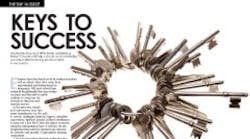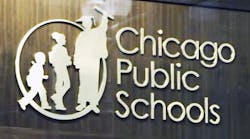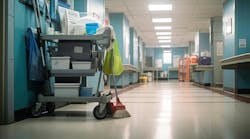Educators know how hard it can be for students to perform well in school when they come from impoverished and dysfunctional environments. Still, most schools have embraced the philosophy that every student can learn, and they work to enable students to overcome the obstacles in their lives and strive for success.
In the same way, schools and universities may face many impediments on the path to success: inadequate financial support, unrealistic expectations, apathetic parents, political interference, to name just a few. But to have any chance at success, education administrators have to embrace the philosophy that every school or university can overcome its obstacles and provide a high-quality learning environment.
A key part of providing that high-quality education experience is having facilities that are safe and healthful, and offer students and teachers an opportunity to interact in spaces conducive to learning. Here are 10 areas that education institutions should be addressing as they strive for effective schools and universities:
1. Finances
The overriding issue for all schools and universities is whether they will have enough money to provide students with the level of education that they expect. Administrators always examine education and facility issues in the context of cost vs. benefits, but when budgets are depleted, all proposed projects should undergo more intense scrutiny.
Education administrators should continue to strive to provide the best education opportunities while always watchful for ways to deliver those opportunities in the most economical way (see related article, p. 18).
2. Sustainable design
To ensure that the money spent on building and renovating facilities is a wise investment, schools and universities should pursue projects that will last a long time and cost less to operate and maintain. Embracing sustainable design enables education institutions to provide facilities that use resources efficiently and minimize the impact they have on the environment.
The U.S. Green Building Council’s LEED (Leadership in Energy and Environmental Design) program has become the most prominent way for those in the design and construction industries to judge a building’s adherence to sustainable principles. The LEED certification process awards points in six categories: Sustainable Sites, Water Efficiency, Energy & Atmosphere, Materials & Resources, Indoor Environmental Quality, and Innovation in Design.
Other organizations, such as the Collaborative for High-Performance Schools, also have rating systems that assess a facility’s green design elements.
Some schools and universities that are unable or unwilling to bear the time or expense of pursuing a certification process such as LEED still should try to incorporate environmentally friendly and energy-saving strategies into their building projects.
3. Operating efficiency
Whether or not a school facility was built with a sustainable design, building managers should try to make sure that the finished project is delivering on its promises. Building commissioning enables designers and school officials to determine if a building and its systems are performing as design models projected.
Schools also should take steps to provide training for those using a building so that they do not undermine or counteract energy-saving features of a facility. Energy efficiency can involve the interaction and balancing of many factors, and opening windows, tinkering with climate-control settings or overriding automatic lighting controls can throw off those calculations.
4. Educational technology
The presence of computers and Internet connections in classrooms has become routine in most American education institutions. But technological improvements and innovations continue, and schools and universities can acquire numerous devices that can enhance or supplement classroom learning.
Some of those: mp3 players that enable students to listen to lectures away from the lecture halls, or podcasts of relevant content; personal response systems, known more commonly as "clickers," enable teachers to collect immediate feedback from students and gauge how well they comprehended a lesson. The pervasiveness of cell phones enables instructors to communicate with students (and parents) via text messages or voice mail.
A National Center for Education Statistics (NCES) survey of teachers in 2009 found that 36 percent reported having access as needed to LCD or DLP projectors; 28 percent had access to interactive whiteboards; 22 percent had access to personal response systems; and 21 percent had access to video conferencing.
5. Distance learning
Shrinking resources mean schools and universities may have to cut back on instructors and the number of courses. Distance-learning technology enables education institutions to overcome the limits on classroom space and available faculty.
The infusion of technology into nearly every education facility in the 1990s and 2000s has made distance learning a possibility for most students regardless of location. According to NCES, 65 percent of school districts reported in 2008 that they offered distance-learning opportunities in their secondary schools; and 64 percent reported offering distance learning in elementary schools. Rural schools rely on distance learning even more heavily—71 percent of rural districts reported that they had distance learning offered in their elementary and secondary schools.
6. Security
Whether economic times are good or bad, schools and universities must continue to be vigilant about the safety of students and staff. Tragedies and violent episodes are occurring with regularity on school campuses—last month, a high school student in Marinette, Wis., took several fellow students hostage at gunpoint and eventually took his own life.
Education institutions can’t prevent the troubles that exist in society at large from encroaching on campus. But administrators can take steps to deter crime and recognize signs of potential problems, and to have a plan in place so schools can respond to and recover from incidents of violence.
Antibullying and violence-prevention programs can help create a school climate that frowns on bullying behavior and defuses conflicts before they escalate to violence. Crisis plans provide clear directions for what school personnel should do in the event of an emergency and help education institutions recover from whatever trauma was inflicted and get back on the road to normalcy.
7. Indoor air quality
Education institutions must be vigilant about facility conditions that can adversely affect the health of students and staff members. Poor indoor air quality (IAQ) from problems such as mold growth or inadequate ventilation can trigger illnesses, especially in children.
The U.S. Environmental Protection Agency (EPA) says that most schools have ventilation rates at less than recommended levels.
"Growing evidence suggests that improving outdoor air ventilation rates can improve student and teacher performance, increase test scores and reduce airborne transmission of infection," the EPA says.
The agency’s IAQ Tools for Schools program provides many products, materials and tools at no cost to help education institutions establish a program to manage the indoor air quality in their facilities.
8. Maintenance/Cleaning
An unsanitary school facility can adversely affect the health of building occupants, and it also can erode the pride that students and teachers have for their schools. Lower expectations can lead to neglect of facilities and a deterioration of the learning climate.
Education institutions should resist the temptation to deal with immediate budget shortfalls by forgoing regular cleaning and maintenance of their facilities. Preventive maintenance is more cost-effective than having to pay for emergency repairs after a system or equipment breaks down or wears out.
As they keep facilities clean, maintenance workers should be wary of using products that introduce potentially harmful chemicals into the environment. Green cleaning programs can help schools and universities identity and acquire environmentally safe supplies and equipment, and use safe practices.
9. Managing space
Operating more efficiently is critical for schools and universities that have to cope with yet another round of budget cuts. Underutilized facilities may have to be closed to save operating costs; school districts and education institutions may decide to sell or lease unused space. They also may ask other governmental agencies or private businesses to become partners and share facility space in joint-use projects.
At the higher-education level, many community colleges have to cope with space shortages as they try to accommodate the burgeoning number of people unable to find work who are returning to school for job training. Some institutions have been able to acquire funding to construct additional classroom space, but others have had to cap enrollment and turn away prospective students.
10. Community connection
A school campus may be lacking in amenities or resources because of budget woes, but by making the community a welcome partner, schools can benefit from the connections that make a campus a vital part of a neighborhood.
Parents and retired people from the community can provide valuable help as volunteers. Business partners can provide unique knowledge that enhances education, as well as offering assistance with finances and resources. Allowing community groups to use the library, meeting spaces or recreation areas in a school facility helps create an atmosphere of mutual support and connectedness.
Kennedy, staff writer, can be reached at [email protected].



